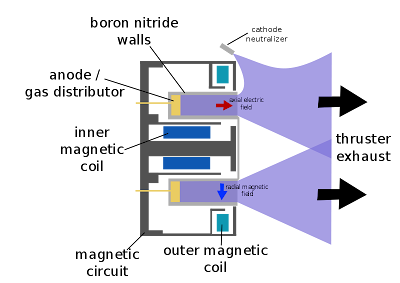While the Dawn spacecraft is visiting the asteroids Vesta and Ceres, NASA Glenn has been developing the next generation of ion thrusters for future missions.
NASA's Evolutionary Xenon Thruster (NEXT) Project has developed a 7-kilowatt ion thruster that can provide the capabilities needed in the future.
An ion thruster produces small levels of thrust relative to chemical thrusters, but does so at higher specific impulse (or higher exhaust velocities), which means that an ion thruster has a fuel efficiency of 10-12 times greater than a chemical thruster.
The higher the rocket's specific impulse (fuel efficiency), the farther the spacecraft can go with a given amount of fuel.
Given that an ion thruster produces small levels of thrust relative to chemical thrusters, it needs to operate in excess of 10,000 hours to slowly accelerate the spacecraft to speeds necessary to reach the asteroid belt or beyond.
The NEXT ion thruster has been operated for over 43,000 hours, which for rocket scientists means that the thruster has processed over 770 kilograms of xenon propellant and can provide 30 million-newton-seconds of total impulse to the spacecraft.
This demonstrated performance permits future science spacecraft to travel to varied destinations, such as extended tours of multi-asteroids, comets, and outer planets and their moons.
Image Credit: NASA
NASA's Evolutionary Xenon Thruster (NEXT) Project has developed a 7-kilowatt ion thruster that can provide the capabilities needed in the future.
 |
| Schematic of a Hall effect thruster electric propulsion device |
The higher the rocket's specific impulse (fuel efficiency), the farther the spacecraft can go with a given amount of fuel.
Given that an ion thruster produces small levels of thrust relative to chemical thrusters, it needs to operate in excess of 10,000 hours to slowly accelerate the spacecraft to speeds necessary to reach the asteroid belt or beyond.
 |
| Diagram of how a gridded electrostatic ion engine (Kaufman type) |
This demonstrated performance permits future science spacecraft to travel to varied destinations, such as extended tours of multi-asteroids, comets, and outer planets and their moons.
Image Credit: NASA







No comments:
Post a Comment